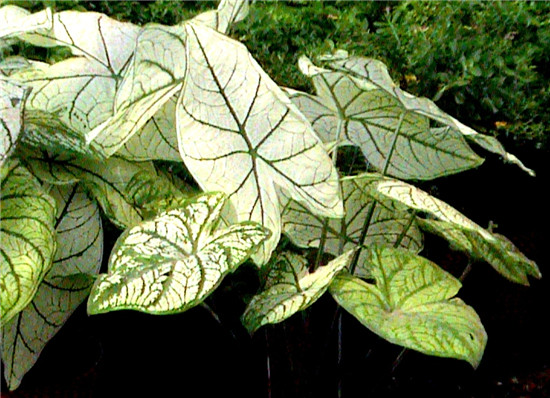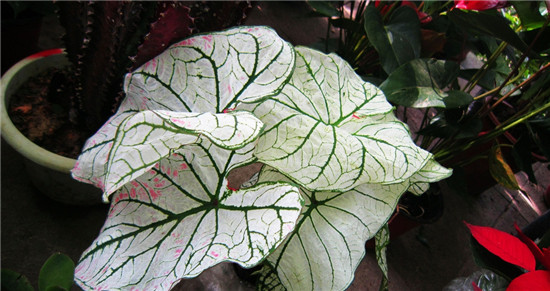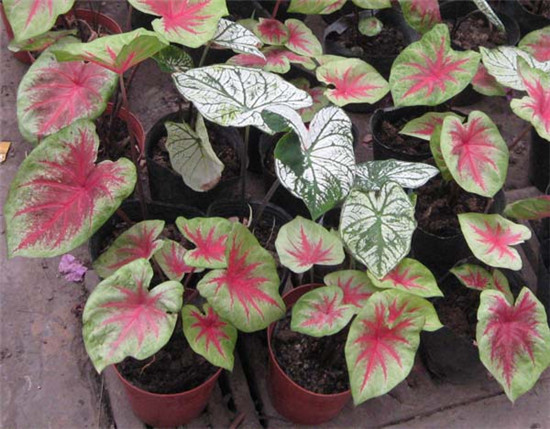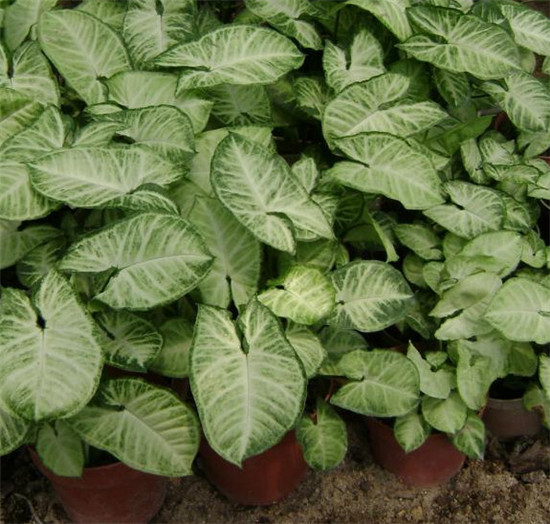What are the varieties of taro?
Taro is a shade-loving ground cover plant, which can be used as a shade-tolerant ornamental plant. Next, let's take a look at the common varieties of taro.

Amorphophallus, perennial herb. With tuber, plant height 15-40 cm, tuber, oblate, membranous scaly leaves. Leaves basal, leaf blade qualitatively inserted, arrowhead-shaped ovate, ovate-triangular to round-ovate. Not only the leaf is huge, but also the leaf color is bright and the ornamental value is high. It is a newly popular indoor foliage plant.
8-20 cm long and 5-10 cm wide; leaves are dark green, with various transparent or opaque spots such as red, white or yellow; main veins trigeminal, lateral veins reticulate; petiole slender, Terete, base extended into sheath-like, with small brown spots. Inflorescence basal, inflorescence stalk 10-13 cm long; lower part of inflorescence tubular, ca. 3 cm long, outside green, inner face green-white, base bluish purple; shed ca. 5 cm long, white; fleshy inflorescence slightly shorter than spawn, shortly stalked; flowers unisexual, without perianth; female peanut in lower part of inflorescence, male flowers in upper part of inflorescence, separated by sterile neutral flowers in middle; neutral flowers with staminodes, berries white. The florescence is 4-5 months.

Propagation methods of Colocasia esculenta
In pot cultivation, the tuber was not buried in the sand bed to promote the root, and then planted in the pot after growing roots. Do not tolerate strong light, should be placed under the shade shed during cultivation, keep the basin soil moist during the growing season, and apply fertilizer 1-2 times a month. It should be kept for more than 15 ℃ in winter, and if there is no heating condition, the tubers can be dug up and dried after the leaves have dried up, and the residual roots can be stored in sand to be planted in spring.
In order to germinate neatly, you can first accelerate the germination, arrange the tubers on the sand bed, cover 1 meter of fine sand, keep the sand bed moist, room temperature 20-22 ℃, pot after germination and rooting. For example, the mother ball with larger tubers and more bud points can be divided and propagated. Cut the sprouted tubers with a knife, wait for the section to dry and heal, and then pot.

Growth habits of Amorphophallus
Taro like to scatter light, should not be too strong, hot sun exposure leaves prone to burn phenomenon, leaf color blur, veins dim, poor ornamental. If the light is not enough, the leaf color spot darkens, and the leaf grows and shows weakness. If the shading time is too long, the leaf is tender, the petiole is elongated, the leaf color is not fresh, and the petiole is easy to break.
1. Lighting: flower and leaf taros like sunshine and should not be too strong. If the light is not enough, the leaf color spot darkens, and the leaf grows and shows weakness.
2. Moisture: Amorphophallus likes to be wet. A lot of water is needed in spring and summer.
3. Temperature: Taro is not cold-resistant, the suitable temperature for growth is 25-30 ℃, the lowest temperature should not be lower than 15 ℃, the temperature is 22 ℃ for tubers to sprout and grow leaves, and when it drops to 12 ℃, the leaves are withered and yellow.
4. Fertilizer: once a week during the growing period of taro, nitrogen, phosphorus and potassium were applied together, mainly nitrogen fertilizer.
5. Soil: taro requires loose, fertile soil and good drainage.

The main horticultural varieties of taro
1. White leaf taro: the leaves are white and the veins are emerald green.
2. Bright white leaf taro: the leaf white is translucent and semi-bright.
3. East lamp: the middle part of the leaf is crimson, and the edge is green.
4. Seagulls: dark green leaves, with prominent white veins, bicolor.
5. Red clouds: leaves with erythema.
6. Edith Mead: the leaves are almost white, the margin is green, and the main vein is red.
7. Attala: dark green leaves with erythema.
8. Mad Altred Rubra: the leaves are large and round, dark green, with irregular white spots on the surface and red in the main vein.
9. John Pecd: the veins are thick and the leaves are all red.
These are all the contents of the varieties of taro that I have summarized for you. I hope this article can help you. Please continue to follow us.
Related
- Wuhan Hospital Iron Tree Blooming Result Was Instantly Frightened by the Gardener Master
- Which variety of camellia is the most fragrant and best? Which one do you like best?
- What is the small blue coat, the breeding methods and matters needing attention of the succulent plant
- Dormancy time and maintenance management of succulent plants during dormancy
- Minas succulent how to raise, Minas succulent plant pictures
- What are the varieties of winter succulent plants
- How to raise succulent plants in twelve rolls? let's take a look at some experience of breeding twelve rolls.
- Attention should be paid to water control for succulent plants during dormant period (winter and summer)
- Watering experience of twelve rolls of succulent plants
- Techniques for fertilizing succulent plants. An article will let you know how to fertilize succulent plants.



